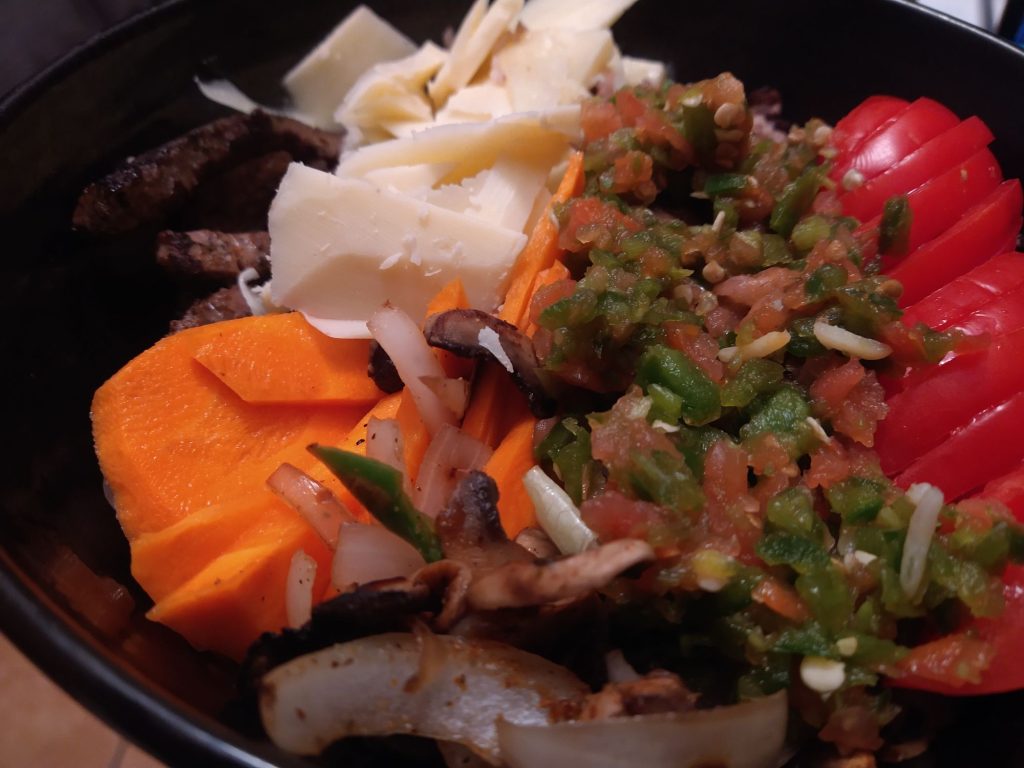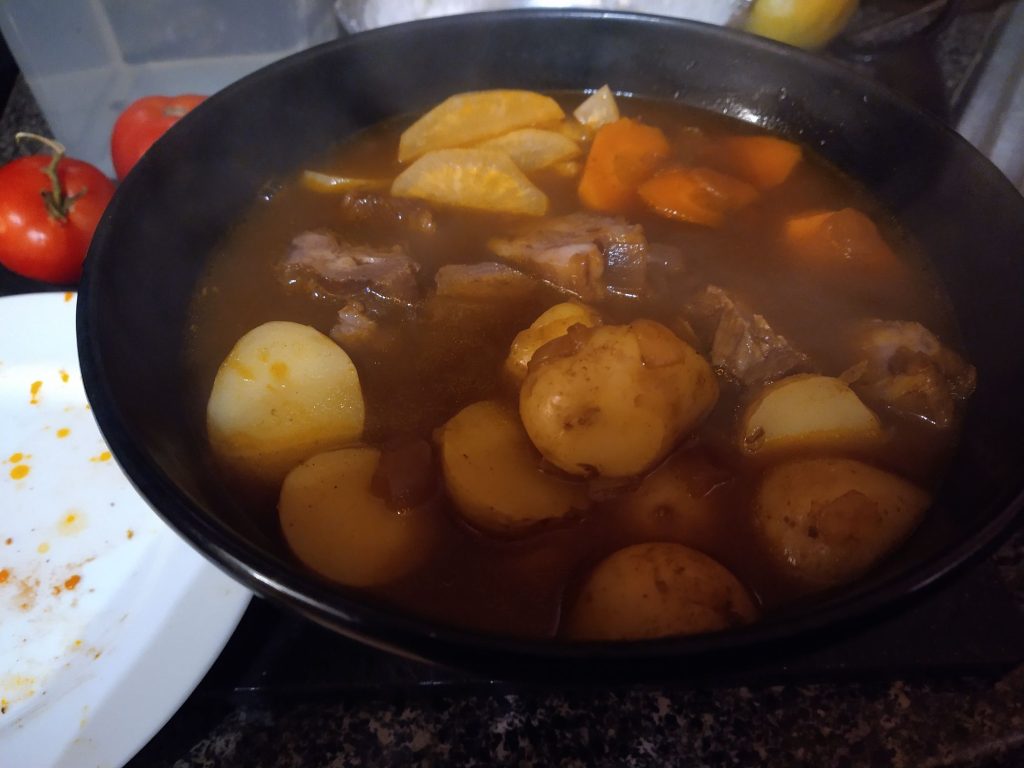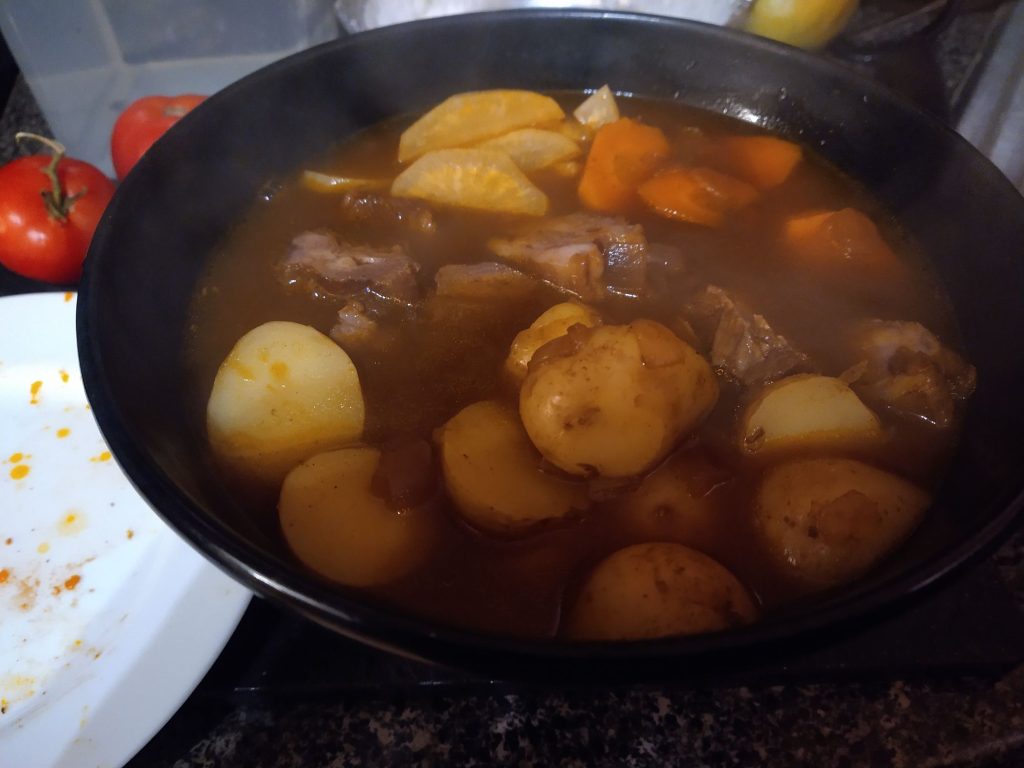
So I messed up last weekend and tried to make shakshuka for friends, only to realize I had run out of the good feta cheese. So I came up with a plan and tried to ask the halal grocery store that has meal delivery if when I ordered the turkey bacon and egg platter could they maybe send me the feta (which is about the same price)? And I hoped and I waited, and I got the turkey and egg platter. Alas.
So I but it the bacon for nibbling, but I put the eggs in the refrigerator and poached fresh ones for the shakshuka.
But I had three random fried eggs. But I also had leftover cooked rice!

Fried rice sounded like the best answer
So we diced carrots, Korean green radish, onion, garlic, ginger, Chinese sausage, and some scallions. And the fried eggs (cut up with some kitchen scissors).
We (and by we, I mean my friend @senorgrouch ) started cooking the hard vegetables first, then most of the other ingredients, and then the rice, and the eggs got added in with a handful of scallion greens.
Finished off with a sauce of 2 teaspoons of soy sauce, 4 teaspoons of shaoxing wine, and a little drizzle of sesame oil.
It still needed more salt, and we added Laoganma at the table.

We wanted a little more protein with dinner, but also wanted something simple, so I made sliced and dressed some soft tofu with Laoganma, soy sauce, black vinegar, bonito flakes, and sliced scallions.

And then the next day I made pork rib and lotus root soup for when my friend T also joined us.
Several months ago I made a clear gelatinous stock from pig feet and froze it. So I used two quarts of the stock.
Weee! had 2 pounds of precut pork rib meat with soft bones. I started with rinsing the meat clean in cold water, then I parboiled them in water and rinsed off any foam. Then that went into the stock
This was my first time using fresh lotus roots (instead of the packaged kind), and they were easy to clean and peel.
And then I followed thewoksoflife’s advice to simmer everything for four hours. I put my oven to 220F and let it cook slowly. Their dipping sauce suggestion was also a good choice. And after I had dipped the solids, the broth did benefit from stirring in an extra pinch of salt.















